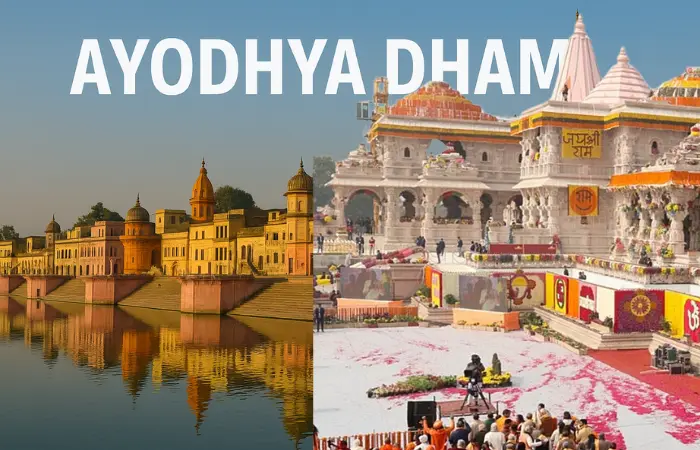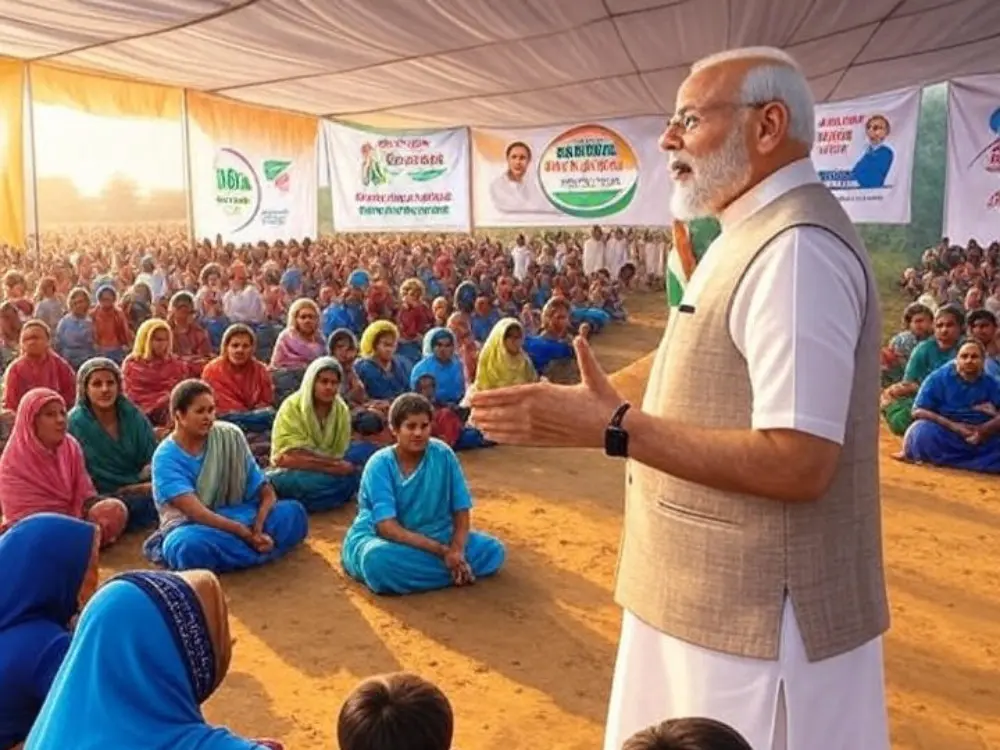Ayodhya Dham, located in Uttar Pradesh on the banks of the holy Sarayu River, is one of the most sacred places in India. Known as the birthplace of Lord Rama, this ancient city holds deep spiritual, historical, and cultural significance. Millions of devotees visit every year to connect with their faith and experience the divine aura of this holy city. Ayodhya is not just a place of temples; it’s a living heritage site where spirituality, tradition, and modern development coexist.
Table of Contents
ToggleA City Older Than Time: The Untold History of Ayodhya’s Sacred Legacy You Want To Know ?

Archaeological excavations have uncovered traces of ancient settlements dating back to the 8th century BCE, suggesting a long and continuous habitation. One of the most significant discoveries is the Vishnu-Hari inscription (circa 1140 CE), which references a temple dedicated to Vishnu, an incarnation of whom is Rama. This finding has fueled debates about whether a Hindu temple once stood at the site later occupied by the Babri Masjid.
Other archaeological evidence, including terracotta figurines, pillar bases, and architectural remnants, hints at a pre-existing Hindu religious structure. However, interpretations vary. Some scholars argue that these findings align with descriptions in the Ramayana, while others caution against conflating myth with hard evidence.
Contested Narratives and Scholarly Perspectives
The identity of Ayodhya remains a subject of debate. Some historians contend that the Ayodhya of the Ramayana is a mythical city, distinct from the ancient town of Saketa—the name by which present-day Ayodhya was known in early Buddhist and Jain texts. These texts mention Saketa as a prominent urban center but do not explicitly link it to Rama’s kingdom. Skeptics point to the absence of definitive archaeological proof tying specific structures to the Ramayana era.
On the other hand, proponents of Ayodhya’s historical connection to Rama’s legend emphasize the cultural and religious continuity. They argue that oral traditions, later texts, and archaeological findings collectively reinforce the city’s sacred significance.
Ayodhya is considered one of the seven Mokshapuri cities in Hinduism—cities that grant liberation or salvation. For Hindus, the city is sacred because it is the birthplace of Lord Rama, the seventh avatar of Lord Vishnu. Pilgrims believe that visiting Ayodhya and bathing in the Sarayu River can wash away sins. Temples like Ram Janmabhoomi, Hanuman Garhi, Kanak Bhawan, and Nageshwarnath are important spiritual centers. Rituals like aarti, parikrama (circumambulation), and reading the Ramayana are part of the devotional experience here.
From Pilgrim Path to Smart City: Ayodhya’s Mega Transformation You Must See
Architectural Renaissance With the construction of the Ram Mandir, Ayodhya is undergoing a major transformation. The temple, built in traditional Nagara style, is an architectural marvel. The sanctum sanctorum houses the idol of Ram Lalla (infant form of Lord Rama), and the temple complex includes sculptures, courtyards, and prayer halls. One of the unique features is the Surya Tilak system, which allows a beam of sunlight to fall exactly on Ram Lalla’s forehead on Ram Navami each year. This is a blend of science and spirituality that adds to the temple’s glory.
Modern Infrastructure and Facilities To support the growing number of pilgrims, the city has seen rapid infrastructure development. The Ayodhya Dham Junction railway station was recently upgraded with modern facilities like lifts, escalators, waiting halls, and digital displays. The station’s design reflects temple architecture and showcases murals from the Ramayana. The newly inaugurated Maharishi Valmiki International Airport connects Ayodhya to major cities, making travel easier for devotees. Clean roads, 24/7 security surveillance with over 1,000 cameras, and eco-friendly transport options are part of Ayodhya’s smart city plan.
Pilgrimage Experience For devotees, visiting Ayodhya is a soul-stirring journey. The city offers a variety of spiritual experiences. Start your day with a holy dip in the Sarayu River, followed by darshan (viewing) at major temples. The evening aarti at Ram Ki Paidi is a visual and spiritual delight. Special pilgrimage routes like the 14-Kosi and 84-Kosi Parikramas let you walk through the sacred geography of Lord Rama’s life. During festivals like Ram Navami and Diwali, Ayodhya lights up with joy and devotion, attracting millions of pilgrims.
Ayodhya’s Global Rise & New Visitor Records
Ayodhya has recently been in the spotlight due to the grand consecration ceremony of the Ram Mandir on January 22, 2024. Since then, over 5.5 crore devotees have visited the temple. The city is also being developed as a major religious tourism hub with investments in infrastructure, hospitality, and public services. Reports from global media outlets like Reuters and The Wall Street Journal have compared Ayodhya’s transformation to Vatican City. Plans include a spiritual corridor, heritage walks, and cultural museums to enhance the pilgrim experience.
When is the best time to visit Ayodhya?
Winter months (November to February) are ideal. Festivals like Ram Navami and Diwali are especially vibrant.
How do I reach Ayodhya?
You can travel via train to Ayodhya Dham Junction or by air through the Maharishi Valmiki International Airport.
Are there good accommodation options?
Yes, from dharamshalas and ashrams to hotels and guesthouses, there are plenty of places to stay.
Is the city safe for solo travelers?
Yes, Ayodhya is considered safe, especially with the new security measures and surveillance in place.











